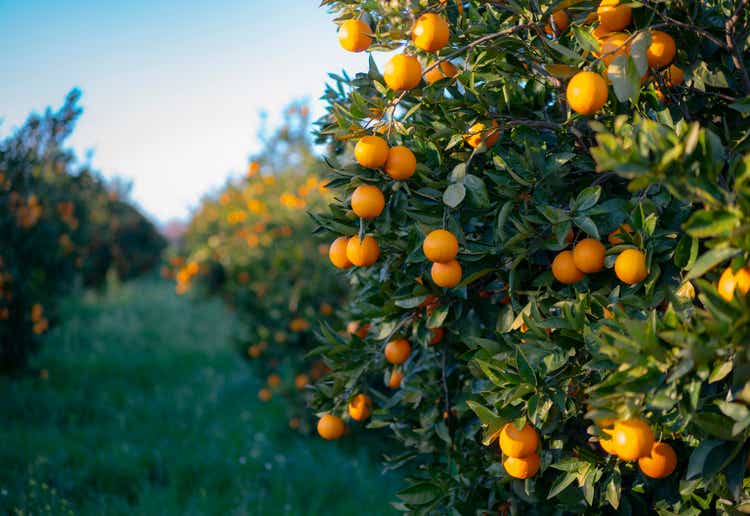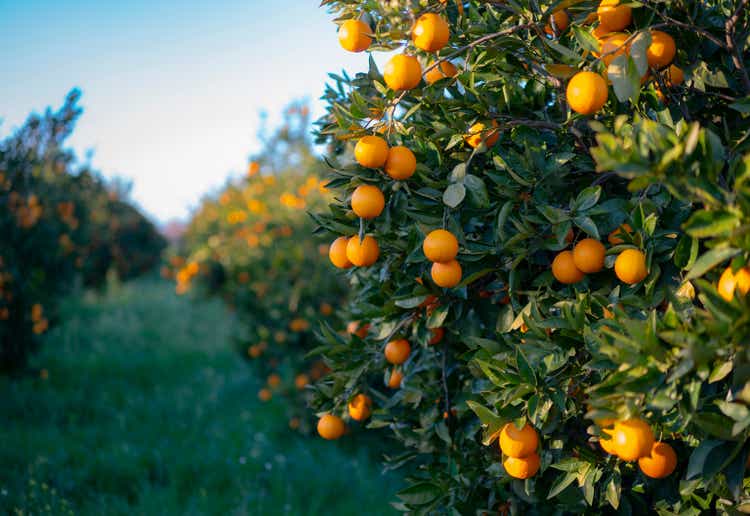
ozgurdonmaz
As consumers struggle with higher prices for groceries, one staple of the American breakfast is about to get a lot more expensive. Plagued by diseased groves, uprooted trees to make room for housing developments, and severe weather that has decimated crops, the price of orange juice has skyrocketed in the past 3 years by 327% and is expected to climb even higher in the wake of Hurricanes Helene and Milton which swept through Florida less than three weeks apart.
According to industry data, Hurricane Milton destroyed over 3 million boxes of oranges in Florida, setting the state up for the smallest orange harvest in close to 100 years. Coupled with a protracted drought in Brazil, the world’s largest orange exporter, the price for frozen concentrated orange juice trading on the Intercontinental Commodity Exchange (“ICE”) has soared 80% to a record high of $5.55 per pound.
Before Milton and Helene visited the state, Florida was already grappling with a bacterial disease called citrus greening that swept through orange groves, producing fruit that is bitter, misshaped, and poorly colored, and eventually killing the tree. Farmers have resorted to building expensive greenhouses over an entire orchard to protect the crop from the disease spread by the Asian citrus psyllid, an insect which transmits the disease while they feed. Since 2005, citrus greening has reduced citrus production by 75% and doubled production costs.
Faced with diseased trees and the risk of another hurricane wiping out their crop, many of Florida’s orange farmers have thrown in the towel and sold off valuable land to real estate developers who were rapidly putting up housing developments where orchards once stood. Land devoted to citrus production in Florida has shrunk by 17% while the price of an undeveloped acre of land in Polk County (the largest orange producing county in the state) has appreciated by more than 60% since 2014.
Most orange juice sold in grocery stores — including Tropicana, the most popular brand and 39% owned by PepsiCo (NASDAQ:PEP) — is made from a process called “not-from-concentrate” which involves squeezing fresh oranges and then filtering and pasteurizing the juice before bottling it. Coca-Cola’s (NYSE:KO) Simply Orange is also made from the same process, while Minute Maid (KO) is made from a cheaper process using concentrate.
To address the higher price for oranges, Tropicana has reduced the size of a container of juice by 10% and increased the price by more than 30% from a year ago. And while Coca-Cola (KO) does not separate out sales for Simply Orange or Minute Maid, the company earns roughly $13B annually from its juice drinks globally, with Simply Orange generating over $2B in annual sales for the company.
Since it’s unlikely producers and retailers will absorb the higher cost of oranges, a 46oz bottle of Tropicana could reach $4. At $5, however, a negative demand response could recalibrate demand with supply to the advantage of the consumer.
